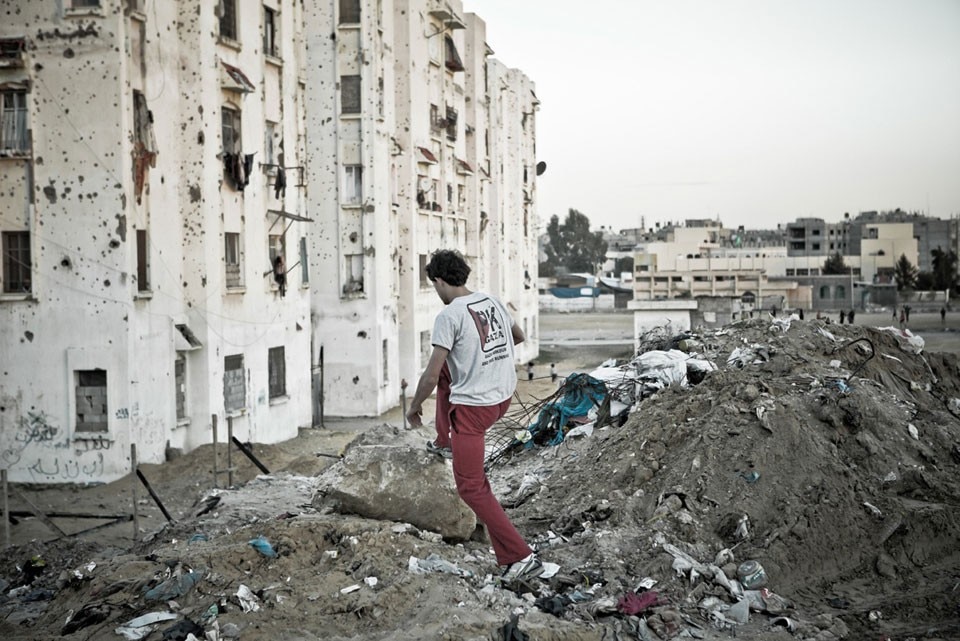This article was published on Domus 966, February 2013
In his book Hollow Land, the preeminent analysis of the visible and invisible ways through which Israel implements its control over Palestinians in and beyond the occupied territories, Eyal Weizman describes how “the mundane elements of planning and architecture have become tactical tools and the means of dispossession.” Gaza is the birthplace, in Weizman’s analysis, of a brutal and astute new military-urbanistic doctrine in which the battleground is shifted to embrace the most commonplace, mundane elements of the urban fabric—those dwellings, stores and workshops in which everyday life unfolds. Just as the Israeli Defense Forces learned to move seamlessly through walls, blasting a path deep into the city, room by room and building by building, in 2005 a group of youths from Gaza had a similar epiphany. Inspired by the nascent sport of parkour, born in the Parisian banlieues, they began to observe the urban fabric of Gaza as a playground through which they could move fluidly, using their bodies—instead of weapons and explosives—to overcome boundaries and barriers. The following conversation traces the origins of Gaza Parkour Team through the voices of its founders, eight years later.
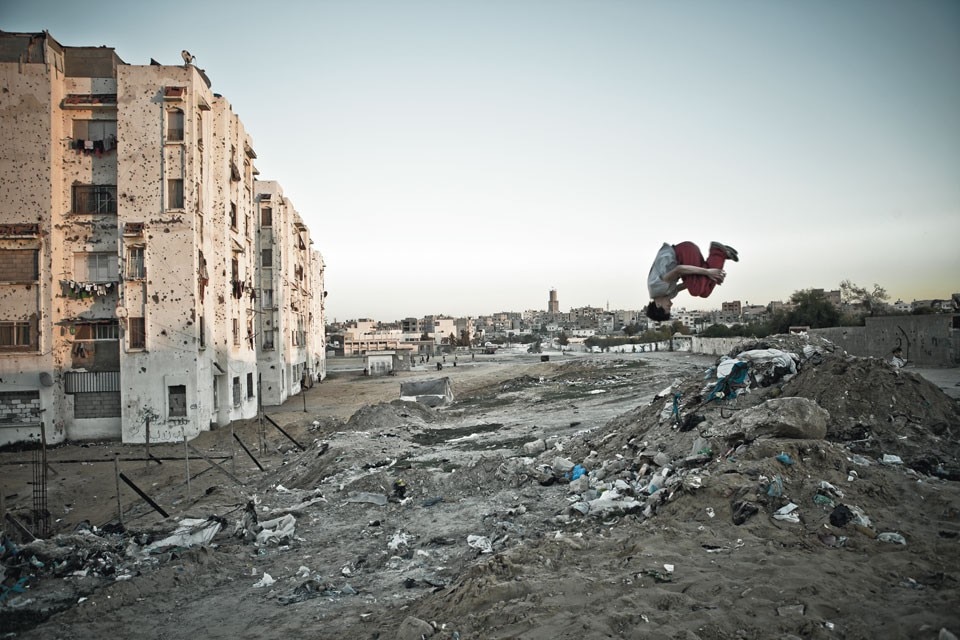
domus How did Gaza Parkour Team begin? What do you love about parkour and free running?
muhammed aljkhbeir The team was founded in 2005. We were introduced to parkour through a documentary, Jump London, which we saw on the Al Jazeera Documentary Channel. We were attracted to the sport largely because it involves risk, adventure, and a new athletic style. The team started with the two of us, me and Abdullah. At the time, parkour was a nascent sport—almost no one knew of it in Palestine or in the Arab world. Eight years later, we can say that there is a strong base for parkour in Palestine—it is quite popular among young people here.
abdullah anshasi It makes them feel freedom in their souls, despite the many restrictions of living in Gaza—the blockade, the occupation, unemployment, the lack of places to have fun. They have so much fun with parkour. Palestinians have a special taste for this kind of freedom.
domus Who are your heroes?
aa The Parkour International teams. We’d love to represent Palestine at the international tournaments. Our heroes are the champions of world in parkour—they inspire us.
ma People like David Belle, Daniel Ilabaca, Ryan Doyle, Erik Mukhametshin, Phil Doyle, Sébastien Foucan.
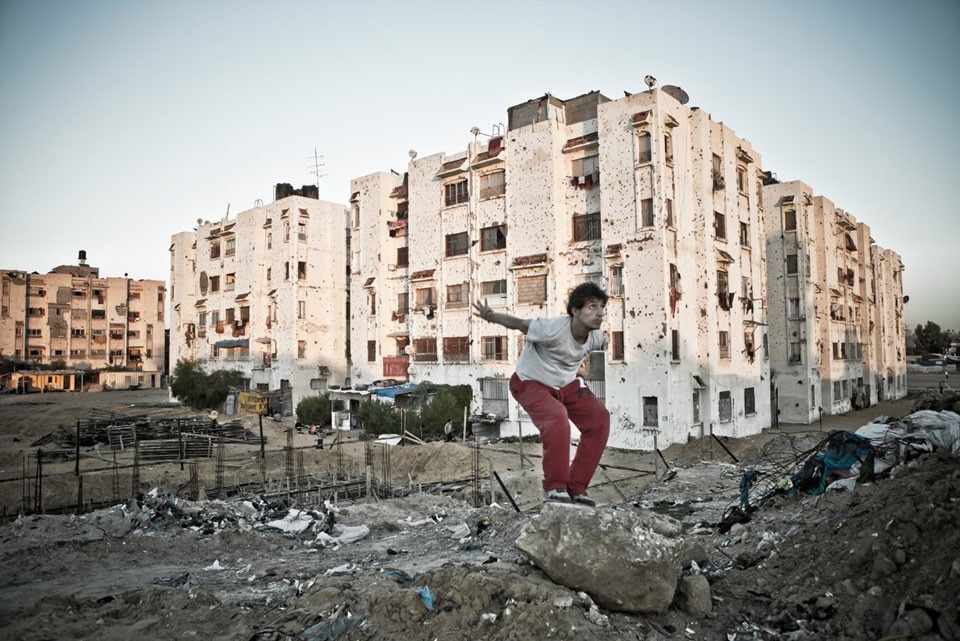
domus Parkour is the art of overcoming obstacles and boundaries—without equipment, just using one’s body. Gaza is a city defined by obstacles and boundaries. Is there a connection there? Is this why you chose to practice parkour?
ma Certainly there is a big relationship between parkour and barriers that we’re surrounded by in the Gaza Strip, There’s the blockade, walls are everywhere, and the sea, which is normally a sign of freedom, is for us a symbol of incarceration. As parkour players, Gaza City is a source of pain, worry and psychological distress. There is so much violence here—continuous wars, bombing, pillaging of the agricultural land, killing of civilians and children, and the suffocating siege that makes us feel as though we’re in a cage made by the Israeli army. Parkour gives us a sense of freedom and allows us to endure these conditions without getting deeply depressed.
domus On the cover of this issue is an image of you practicing on the sand dunes of Nuseirat.
aa Gaza is a prison where people must continually find ways to survive, even though they know it’s difficult. Overcoming challenges is a way of life here. Part of the problem is that Gaza is so overpopulated that there are not a lot of empty places. We found an abandoned settlement where Israelis lived until 2005 and left empty. Gazans cannot build anything there because they cannot get hold of building materials, so we use it to train.
ma Compared to the places in which parkour is usually practised, Gaza is a pretty unsuitable environment. The only places we can practice are the cemeteries in Khan Younis, the ruins of houses, and sometimes in unrwa schools. We got into a lot of trouble when we tried to practise on the roofs of houses and buildings in the refugee camps—the reactions of people were not positive because they considered us intruders or people trying to rob them. That’s why places like cemeteries work well—they are always quiet and concealed. It can be pretty difficult to stay in shape.
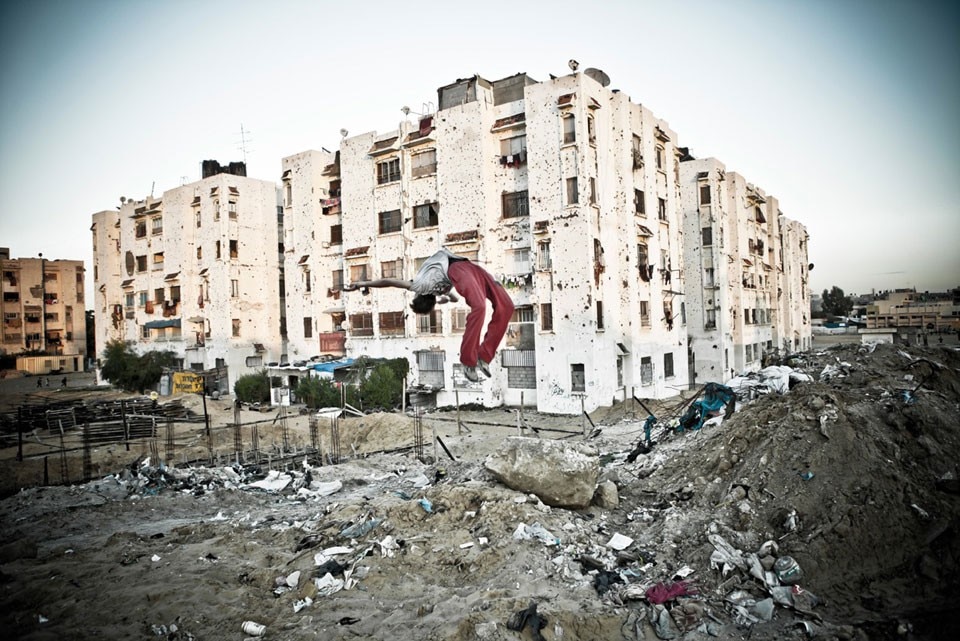
domus Are your activities legal? Have you ever been stopped by Hamas or the Israelis?
ma Yes, our activities are legal—we practice without assaulting anybody or damaging public property. All the same, now and then we are chased by the police when we practise in cemeteries, hospitals and the streets.
aa Empty places in Gaza are also used by the resistance fighters as training camps, so sometimes Hamas stops us because they are worried that the Israeli drones will see us and think we’re training for the resistance. It’s very dangerous, but it’s the only way and we keep doing it. We love life and we need to live it, whatever happens.
domus Are there any memorable episodes you can recall that occurred during your training?
ma We had a lot of accidents—explosions and the like—very close to the places where we practise. The most significant incident happened in the most recent war, while we were training. We were with a group of kids who we train, and suddenly the occupying forces bombed a place nearby...
aa It was an Israeli F16—it bombed an empty patch of land just 500 metres away from us. We were so scared but we continue training.
ma We panicked and feared that the Israeli army would target us. This was one of the most unforgettable incidents we ever faced. We documented it on a camera we had back then.
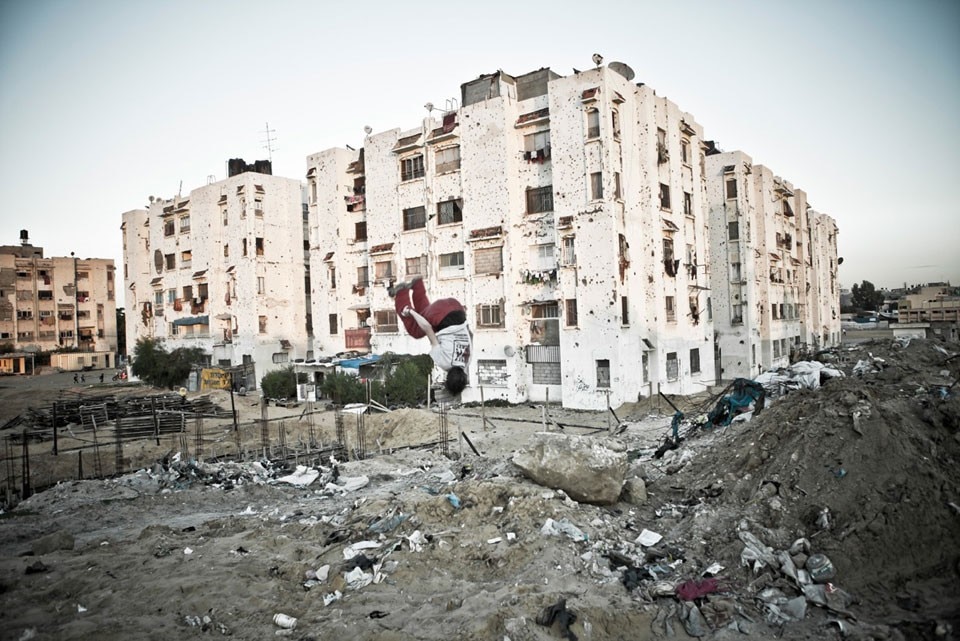
domus Tell us about your logo and your outfits. Who designed them?
ma When we started out, we were making our videos without a special logo for the team, but after a while a friend from Australia—her name is Chantal Barty—offered to design our team logo. We now use it as a permanent logo for the team. After that, we decided to make proper team outfits, so we collected some money from the members and made a set of T-shirts with the team logo. Hopefully in the future we can make a full uniform, so we look more civilised and attractive as a team.
domus You founded a school in Khan Younis. What are your dreams for this school? What would you like to achieve with it?
ma We started with two members, and from there we started thinking of training another group to strengthen the team, increase the number of members, and create a spirit of competition to develop skills. We hoped they could go all the way even if we could not continue to practise this sport. Palestinian society requires us to focus our attention on the future and dedicate our lives to work, have relationships, and start a family. This means that we’ll have to leave parkour one day, but we insist on continuing to practise the sport. That’s why we thought of increasing the number of the team members. Now we’re hoping to establish a much larger academy for parkour in Gaza, to train a new generations of practitioners and spread it among the young guys and girls all over Palestine.
aa Yes—our dream is to find people to help us build a school or a club to be able to practise our sport safely at least, even though there are no safe places in Gaza.
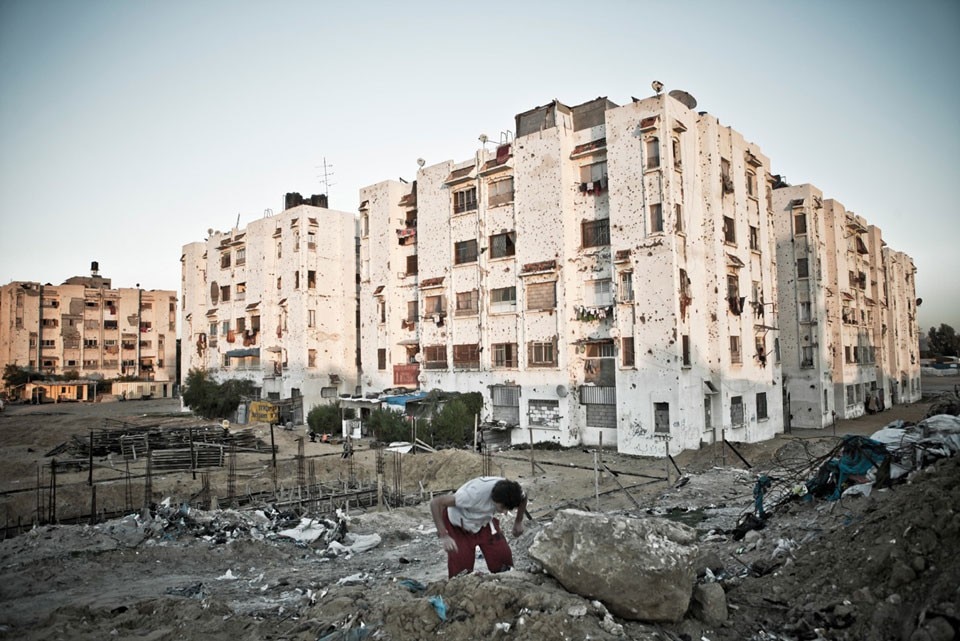
This interview with Muhammed Aljkhbeir and Abdullah Anshasi was recorded by Joseph Grima and Antonio Ottomanelli in January 2013.
The Gaza Parkour Team was set up in 2005 at Khan Younis, in the Gaza Strip, by Muhammed Aljkhbeir and Abdullah Anshasi, who were joined in the same year by Ibrahim Aburahal and Jehad Abusulttan. The group is comprised of 12 members. With thanks to the journalist Majed Abusalama and Yehya Shraim, a student at the Islamic University of Gaza, for their help with this interview.
